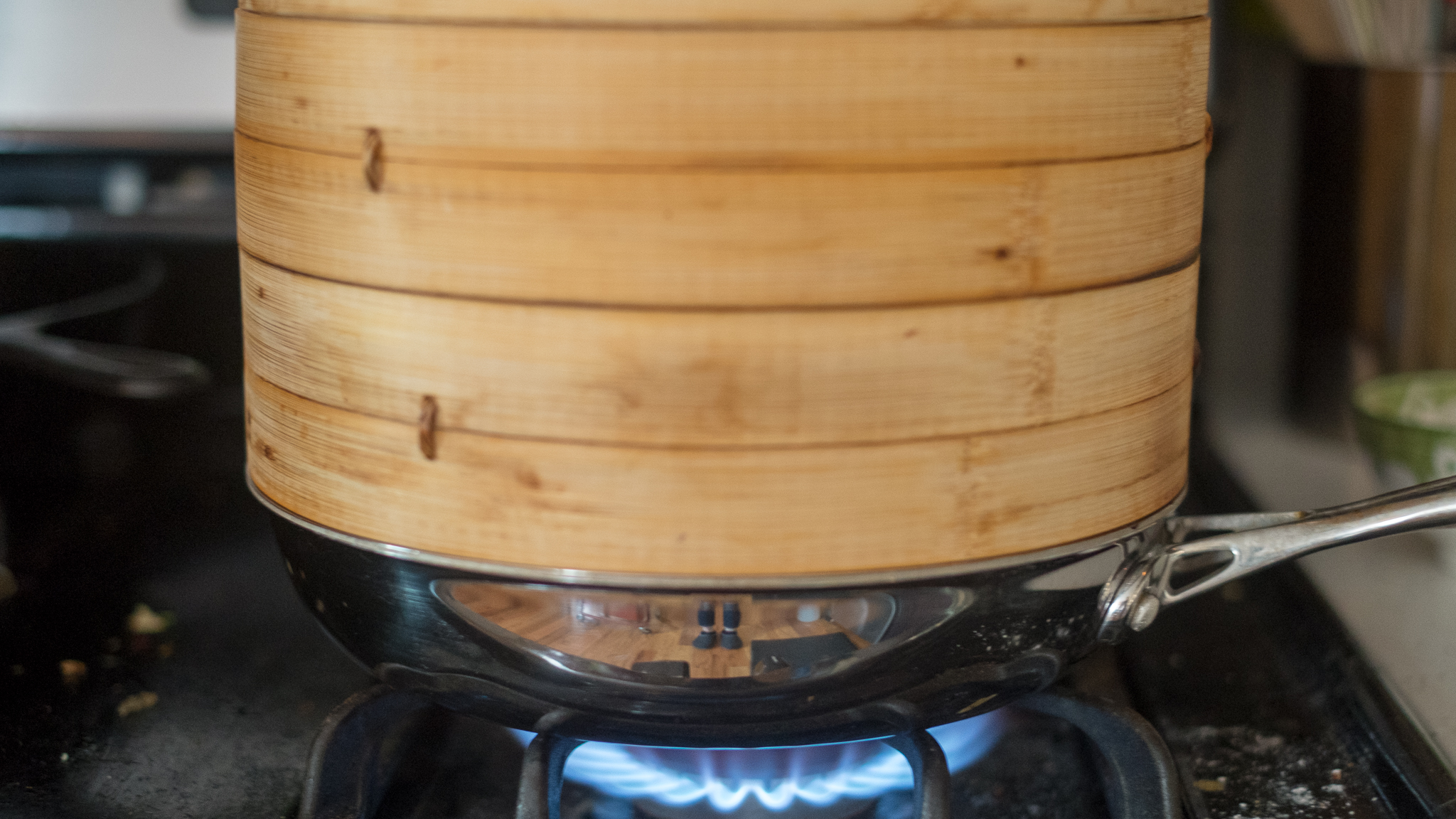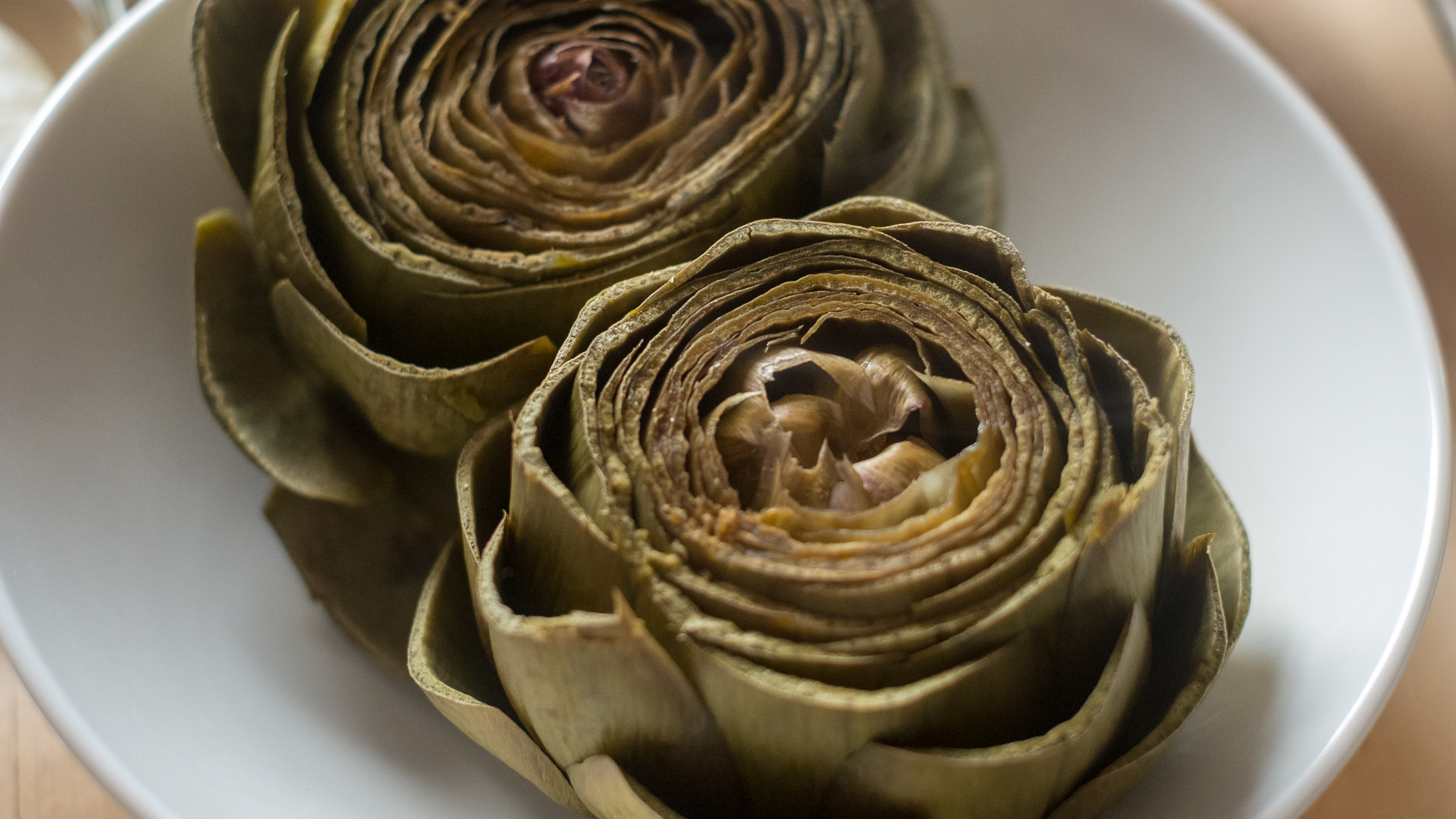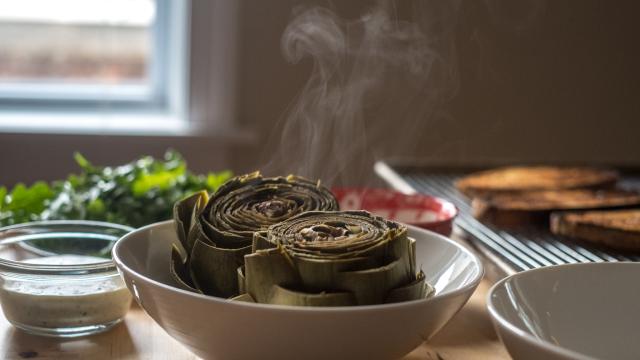It’s hard to get excited about steamed vegetables. When done poorly, they range from totally unremarkable to actively disgusting – but done right, they’re absolutely transcendent. I think this underrated technique deserves another look.
Steaming requires minimal prep, and since it works so fast, it won’t spike your kitchen temperature – especially if you use a microwave or electric pressure cooker. (A stovetop steamer basket does leach some heat to its surroundings, but nowhere near what you’d get from turning on the oven or running a sous vide setup all day.)
My favourite thing about cooking with steam, though, is the flavour: seasoned with nothing but salt and maybe some lemon, a perfectly steamed carrot is the very essence of carrot-y-ness. Pure, delicate flavours can unfortunately come off as bland, so steamed vegetables usually cry out for a good sauce. These are some of my favourite accompaniments for steamed veggies, and none of them require any sort of blender:
- Lemon miso butter: Mash equal parts softened butter (salted, naturally) and your miso paste of choice with a fork, then squeeze in lemon juice to taste. I love this the most on steamed broccoli and carrots.
- Garlic mayonnaise: Mince or grate a small clove of garlic; stir into half a cup of homemade or store-bought mayo; shovel into your mouth via artichoke leaves. Repeat.
- Dijon crème fraîche: One part crème fraîche (or sour cream) plus one part smooth Dijon mustard plus salt to taste equals an outrageously addictive dip.
- Fish sauce vinaigrette: Especially good on steamed broccoli or kale. Add a fistful of chopped fresh herbs if you like (I certainly do).
- Whole lemon salsa verde: Betcha can’t make this stuff just once! It’s great stirred into mayo, if you’re into that, and complements the Dijon crème fraîche particularly well.
[referenced url=”https://www.lifehacker.com.au/2018/03/three-delicious-ways-to-use-the-whole-lemon/” thumb=”https://i.kinja-img.com/gawker-media/image/upload/t_ku-large/iyynsrz0wyrrw1jrbtp6.jpg” title=”3 Delicious Ways To Use The Whole Lemon” excerpt=”I’m a confirmed lemon freak. I love their bright acidity and subtle bitterness in applications both sweet and savoury and firmly believe that a squeeze of lemon ties any dish together; I buy them in shocking quantities, usually keeping up to 3kg in my crisper drawer.”]
Even if you’ve never steamed anything before in your life, I bet your kitchen has at least one way to do so. Mine has three: a pot on the stove, a microwave, and an Instant Pot. These methods produce similar results in the end, but there are some pretty important differences between them; here’s a rundown on each, and my favourite way to use it.
Stovetop

Steaming food on the stovetop is fast but relatively gentle, so it’s best for delicate foods. Haricots verts, asparagus, soft custards, whole fish – you name it, you can probably steam it in a basket on top of a pan of boiling water.
A stovetop steaming setup can be purpose-made or hacked together with stuff you already have. I love my bamboo steamer, but stainless steel baskets work great, as does a heatproof plate on top of balled-up aluminium foil. No matter what kind of apparatus you use, you’ll need a pot or pan large enough to accommodate the basket (or plate), and if you’re not using a bamboo steamer, that pot needs a tight-fitting lid.
Truthfully, I use my bamboo steamer almost exclusively for frozen dumplings; steamed beats fried every time, especially if I’m too tired, sick, or depressed to safely arrange frozen items in a pan of hot oil. The only other dish I frequently use it for is gaji-namul – steamed eggplant with spicy soy-garlic sauce – which I learned how to make from Maangchi.
Is it a bit extra to own a contraption specifically for frozen dumplings and a very specific eggplant dish? Yes, but so am I.
[referenced url=”https://www.lifehacker.com.au/2018/03/how-to-feed-yourself-when-youre-really-depressed/” thumb=”https://i.kinja-img.com/gawker-media/image/upload/t_ku-large/ycb5xaxinqfztm1h2s5a.jpg” title=”How To Feed Yourself When You’re Depressed” excerpt=”An extremely nasty feature of depression is an overwhelming indifference to the concept of staying alive. Eating is a prerequisite for life, so it makes perverse sense that, for many people, it’s among the first victims of a depressive episode.”]
(A note on bamboo steamers: they take a while to actually fill with steam. To keep the timing accurate, I start the timer only when the top is hot to the touch, and I check in on the contents frequently.)
Gaji-namul is as delicious as it is easy: steam chunks of Chinese eggplant for five minutes, cool for a bit, tear into strips with your fingers, and smother in spicy, garlicky, sesame-oil-slicked soy sauce. Inhale. I follow Maangchi’s recipe basically to the letter, but here I added some miso paste and ginger to the sauce, which I blitzed with my stick blender.
Since the microwave steaming method I chose also involves eggplant (I love eggplant), I challenged myself to come up with another bamboo-steamer dish that wasn’t a pile of dumplings. My fridge always has eggs and carrots, so I went for a savoury steamed custard with a side of carrots and leftover rice. I put the carrots on the bottom of my steamer and the custard on top, then steamed them for ten minutes.
The result was a filling, delicious lunch – some lemon miso butter on the carrots sure didn’t hurt – that took 15 minutes, including prep.
Microwave

Technically, everything you make in a microwave is steam-cooked, since it works by exciting water molecules. I’ve barely scraped the surface of microwave cookery, but I find it does one thing extremely well: par-cooking eggplant for frying.
You probably know by know that salting, draining, and rinsing eggplant before frying it doesn’t actually “remove bitterness,” it just collapses the sponge-like cellular structure that causes eggplant to suck up a truly prolific amount of oil. I never bother with salting roasted eggplant, but it’s a step I never skip before frying it – and the microwave does it in a fraction of the time.
Here’s what to do: slice good, firm eggplants in planks lengthwise, lightly sprinkle with salt on both sides, and layer with kitchen towels on a plate. Put another plate on top and microwave on high power for six to eight minutes. Let the eggplant cool until safe to handle, then pat excess moisture off on dry towels and proceed with your recipe.
I made eggplant parmesan because it’s my favourite food on this floating garbage rock; if you’re looking for a recipe, this one from food52 is my one, my only, my everything.
Instant Pot (or Any Pressure Cooker)

You can, of course, steam all manner of things in your Instant Pot – sweet potatoes, bread pudding, Buffalo wings, cheesecake, and molten chocolate cakes, to name a few – but the humble, thorny artichoke is my favourite.
The Instant Pot’s power and capacity make it a natural solution to the Artichoke Problem, which is that they’re incredibly delicious, but need a lot of work to become edible. You still have to do all the stupid artichoke prep – snap off the toughest leaves, lop off the top third, snip any sharp edges with kitchen shears, and slice the stalk off at the base – but once that’s done, your Instant Pot (or pressure cooker) will have them ready for you in twenty minutes.
Place your prepped artichokes on a trivet in your Instant Pot, add about a cup of water, and set the “Steam” function to 20 minutes. Release the pressure manually when time’s up, and serve your artichokes with some dipping sauces (here, some dijon crème fraîche and a whole-lemon aioli thing I’m working on). A green salad and some early-season tomato mayo toast rounds out a gorgeous springtime meal.
I hope that wherever you are, the clouds are finally lifting, and your farmer’s market is ready for its comeback. As you ogle that prime peak-season produce and envision your future together, don’t forget about steam – it might be just what you’re looking for.

Comments
4 responses to “Give Steamed Foods A Chance”
Time to be that guy. I never really had steamed veggies until we got a thermomix. But it is always there anc combining the steaming with other cooking works so well.
One of our new favourite sides is broccoli and carrot steamed. Both are full enough flavours that that don’t need anything to go with them and come out delicious.
The other major steamed dish is veggie pasta, which is thick strips of grated carrot and zuchini. Open we will do that as the base for some steamed chicken and then whatever sauce we are having over the top of it
What, no recipe for steamed hams?
Seems like a wasted opportunity…
I am a huge fan of steamed veggies. I used to hate veggies (my mother boiled them) as a kid but as an adult I love steamed veggies.